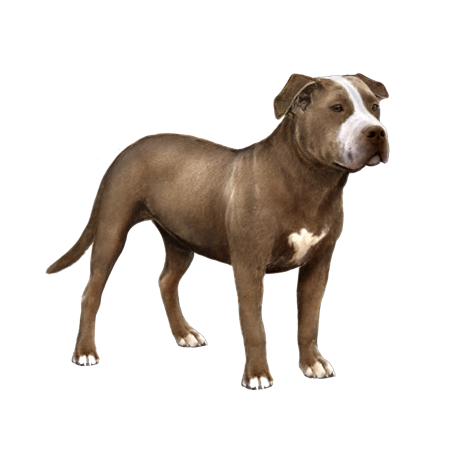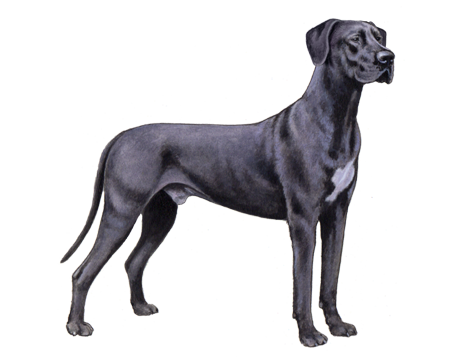
Alapaha Blue Blood Bulldog
The Alapaha Bulldog is an intelligent, alert breed from the working dog group. This American-developed breed is often family-oriented, great with children, and naturally protective.
Interested in discovering if your dog is an Alapaha Blue Blood Bulldog?
Check out Wisdom Panel's DNA tests.

Alapaha Blue Blood Bulldog Traits
General Appearance
The Alapaha is a medium-to-large dog with a powerful, athletic build and square head.
Coat and Coloring
Alapahas have short, glossy coats that are stiff to the touch. A coat that's white with color patches is preferred. Color patches can be merle, brindle, tri-colored or solid.
Distinctive Physical Traits
Notable traits of the Alapaha Bulldog include:
- A medium, square muzzle with a strong underjaw
- V-shaped ears high and wide on the head, giving a square appearance
- Muscular neck and body
- Strong, heavy-boned legs
- Movement should give impression of power and agility, with no clumsiness
Alapaha Blue Blood Bulldog Temperament
Alapahas are devoted, hardworking dogs with protective instincts. These pups typically get along great with children and are loyal family members. They make wonderful watchdogs, though their vigilant nature can make them wary of strangers. Due to their strong prey drive, keeping them on a leash or confined when small animals are around is best.
Alapaha Blue Blood Bulldog History
The exact origins of the Alapaha Bulldog are undocumented. However, dogs resembling this breed have existed in the southern United States since the 1700s. Like the American Bulldog, the Alapaha is believed to be descended from the extinct Old Southern White Bulldog and other English Bulldog derivatives brought to America by the early settlers. The Alapaha gets its name from the Alapaha river in southern Georgia. These dogs primarily served as working dogs tasked with herding cattle and semi-wild hogs, guarding, and other farm duties.
In the late 1970s, a group of dedicated breeders set out to preserve the dwindling breed. The foundational dogs were derived from a few prominent lines developed by stockmen and women in southern Georgia and Florida, namely the Otto, Silver Dollar, Cowdog and Catahoula Bulldog lines. The breed still goes by the nickname of "Otto" for this reason.
Today, Alapahas are bred throughout the United States and abroad.
Alapaha Blue Blood Bulldog Care
Nutrition
The Alapaha Bulldog does well on high-quality dog food formulated for their age, size, and activity level. To help them maintain a healthy weight, measure their meals to avoid overfeeding and keep treats to 10% or less of their daily calories.
Grooming
Alapahas are average shedders. Brush their coats regularly to remove loose fur, especially during seasonal shedding periods. It's important to check their ears regularly and clean them when needed to remove wax build-up and debris. Additionally, nail trims and dental care should be part of their grooming routine.
Exercise
These athletic dogs have great stamina and energy. Daily walks, long hikes, and play sessions in a fenced backyard are great ways to keep them physically and mentally fit.
Training
Alapahas are intelligent dogs that respond best to consistent training using positive reinforcement techniques.
In addition to obedience training, this breed will benefit from early socialization. Getting them comfortable with different people and environments when they're young will help them grow into well-adjusted adult dogs.
Alapaha Blue Blood Bulldog Genetic Health Conditions
-
Hyperuricosuria
Hyperuricosuria (HUU) is a condition that predisposes affected dogs to the formation of urinary stones, such as kidney or bladder stones.
Knowing if your Alapaha Blue Blood Bulldog is a carrier or at-risk for these conditions can help you and your veterinarian plan for your pup’s lifelong care. With Wisdom Panel™ Premium, you can get results for over 200 genetic health tests.
Breed Group
Guard
Dogs of the Guard Group were bred to guard people and property. They are often quick to learn and these intelligent, capable animals make solid companions.


































